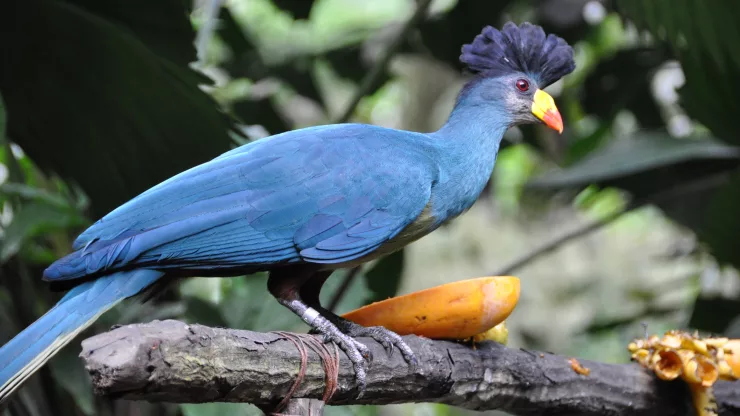Jump to Section
Audubon Bird Sanctuary, a Bird Lover’s Paradise
The Audubon Bird Sanctuary is a nature preserve located on the Gulf Coast of Alabama.
This 164-acre sanctuary is a bird lover’s paradise, home to over 300 species of birds that migrate through the area throughout the year.
The sanctuary offers visitors the opportunity to observe and learn about the diverse birdlife that inhabits the area.
The Pelicans: Graceful Giants of the Sanctuary
The brown pelican is a common sight at the Audubon Bird Sanctuary.
These graceful giants are known for their distinctive beaks, which they use to scoop up fish from the water.
Pelicans are social creatures and can often be seen flying in large groups along the coastline.
The sanctuary offers visitors the chance to see these magnificent birds up close and personal.
| Brown Pelican Facts | |
|---|---|
| Scientific Name | Pelecanus occidentalis |
| Wingspan | 6-8 feet |
| Habitat | Coastal areas |
| Diet | Fish |
The Herons and Egrets: Masters of Patience
The Audubon Bird Sanctuary is also home to a variety of herons and egrets.
These birds are masters of patience, spending long periods waiting for the perfect moment to strike at their prey.
Herons and egrets are often seen wading through the shallow waters of the sanctuary, searching for fish and other small aquatic creatures to eat.
| Great Blue Heron Facts | |
|---|---|
| Scientific Name | Ardea herodias |
| Height | 4 feet |
| Habitat | Wetlands |
| Diet | Fish, frogs, and other small animals |
The Warblers: Tiny Birds with Big Personalities
Don’t let their small size fool you; warblers are some of the most colorful and energetic birds in the sanctuary.
These tiny birds are known for their beautiful plumage and distinctive songs.
Warblers can be found flitting through the trees and shrubs of the sanctuary, searching for insects to eat.
| Yellow Warbler Facts | |
|---|---|
| Scientific Name | Setophaga petechia |
| Length | 4-5 inches |
| Habitat | Forests and woodlands |
| Diet | Insects |
The Woodpeckers: Percussionists of the Forest
The Audubon Bird Sanctuary is also home to several species of woodpeckers.
These birds are known for their distinctive drumming sounds, which they use to communicate with each other and to find food.
Woodpeckers can often be seen perched on trees, using their powerful beaks to drill into the bark in search of insects.
| Red-Bellied Woodpecker Facts | |
|---|---|
| Scientific Name | Melanerpes carolinus |
| Length | 9-10 inches |
| Habitat | Forests and woodlands |
| Diet | Insects, fruit, and seeds |
A Must-Visit Destination for Bird Enthusiasts
The Audubon Bird Sanctuary is truly a must-visit destination for bird enthusiasts.
With its diverse birdlife and beautiful natural surroundings, the sanctuary offers visitors a unique opportunity to connect with nature and learn about the importance of bird conservation. Whether you’re a seasoned birdwatcher or just a casual observer, the Audubon Bird Sanctuary is sure to leave a lasting impression.
FAQ
What is the Audubon Bird Sanctuary?
The Audubon Bird Sanctuary is a nature preserve located on the Gulf Coast of Alabama.
It is home to over 300 species of birds that migrate through the area throughout the year.
What kind of birds can I see at the Audubon Bird Sanctuary?
Visitors to the Audubon Bird Sanctuary can see a wide variety of birds, including pelicans, herons, egrets, warblers, and woodpeckers.
Can I go birdwatching at the Audubon Bird Sanctuary?
Yes, birdwatching is a popular activity at the Audubon Bird Sanctuary. Visitors can observe and learn about the diverse birdlife that inhabits the area.
Are there any guided tours available at the Audubon Bird Sanctuary?
Yes, guided tours are available at the Audubon Bird Sanctuary.
These tours are led by experienced naturalists and provide visitors with an in-depth look at the sanctuary’s birdlife and natural surroundings.
Is the Audubon Bird Sanctuary open year-round?
Yes, the Audubon Bird Sanctuary is open year-round. However, the best time to visit is during the fall and spring when the bird migration is at its peak.
Is there an admission fee to visit the Audubon Bird Sanctuary?
Yes, there is an admission fee to visit the Audubon Bird Sanctuary. The fee helps support the sanctuary’s conservation efforts and educational programs.
I’m a nature enthusiast and creator of Metro Wilds and have spent years exploring the great outdoors.
With a passion for environmental conservation and sustainability, I have dedicated my career to writing about the beauty and wonders of nature, as well as the threats facing our planet.
Contact me at [email protected] for assistance.





